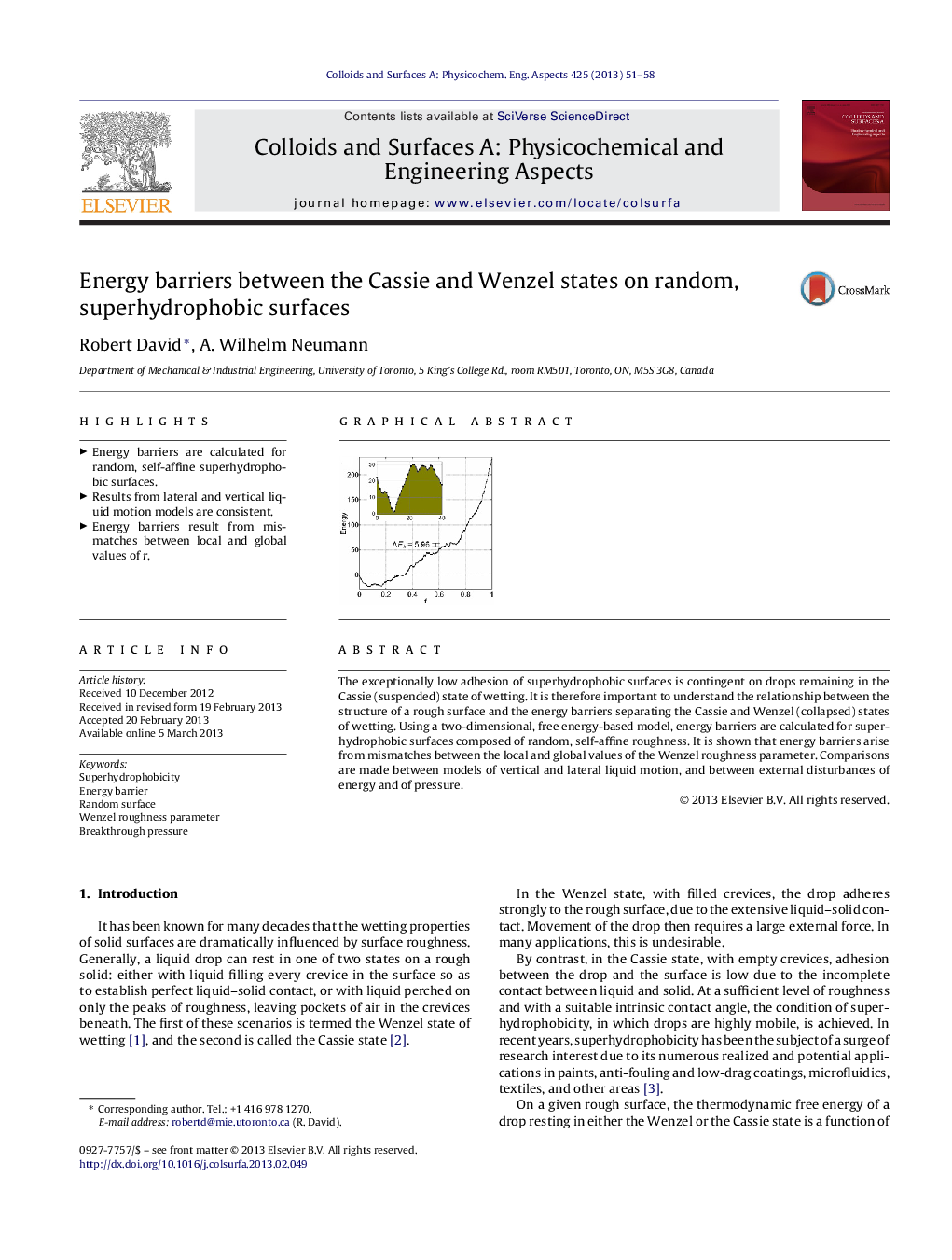| Article ID | Journal | Published Year | Pages | File Type |
|---|---|---|---|---|
| 593597 | Colloids and Surfaces A: Physicochemical and Engineering Aspects | 2013 | 8 Pages |
The exceptionally low adhesion of superhydrophobic surfaces is contingent on drops remaining in the Cassie (suspended) state of wetting. It is therefore important to understand the relationship between the structure of a rough surface and the energy barriers separating the Cassie and Wenzel (collapsed) states of wetting. Using a two-dimensional, free energy-based model, energy barriers are calculated for superhydrophobic surfaces composed of random, self-affine roughness. It is shown that energy barriers arise from mismatches between the local and global values of the Wenzel roughness parameter. Comparisons are made between models of vertical and lateral liquid motion, and between external disturbances of energy and of pressure.
Graphical abstractFigure optionsDownload full-size imageDownload as PowerPoint slideHighlights► Energy barriers are calculated for random, self-affine superhydrophobic surfaces. ► Results from lateral and vertical liquid motion models are consistent. ► Energy barriers result from mismatches between local and global values of r.
